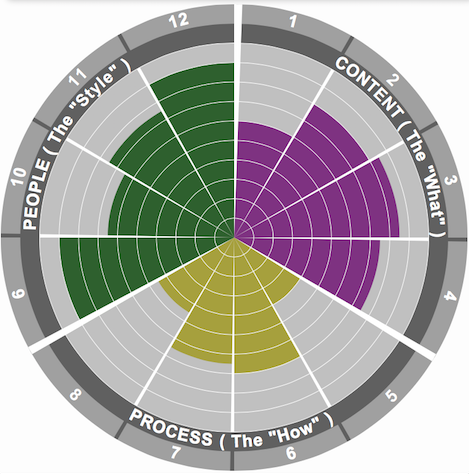At its core, Cx is about all the pursuit of delivering an exceptional customer experience across every touchpoint, every time.
That’s a pretty ambitious goal, and one that I’ve begun to refer to with my clients as the “Cx Holy Grail”.
EVERY touchpoint, EVERY time? Think about it. Every time we buy a product, activate a product, use a product, get support, renew our service, suspend or terminate our contract…and the list goes on…, we must deliver an exceptional experience. Some would even say that our viewing of advertisements, interactions with social media, and even our passive conversations with others about our experiences qualify as a touch points that need to be “managed”. And they wouldn’t be far off.
So where do we focus first? Which touch points? Which parts of those touch points ? What can wait? What can’t?
One way to simplify the madness is to have a common set of unifying standards that every part of the organization can identify with, routinely. While statements like “Exceptional Cx: Every Touchpoint, Every Time” make for good mantras and vision statements, our Cx program will be short lived unless those statements can be translated into a clear set of observable, measurable and actionable factors. Without these, you’re literally flying blind with no way of knowing when something is broken, where improvement is needed, or how to fix it. That’s a core principle in managing any strategy, and one that is glaringly missing from most Cx programs today. Our Touchpoint Assessment Model (TAM), and the 12 attributes that comprise it, was essentially constructed to address that gap and and help our clients better focus and navigate their Cx improvements.
TAM in a Nutshell
While the model is based on a quite a bit of research, client experiences, and some pretty creative crowdsourcing; its structure and architecture is quite simple: 3 key areas of focus comprised of 12 unique and discernible attributes.
- Relevant to the specific transaction, persona and context at play
- Useful in serving its intended purpose
- Reliable and consistent in its delivery
- Value accretive (we’ll explain this more later, but suffice it to say, it’s the “differentiable stuff” (smart value) that gets noticed)
- Crazy simple
- Responsive to the required or desired outcome of the transaction
- Efficient and free of waste (“my time” and “your’s”)
- Transparent when they need to be
- Inviting and engaging
- Real and Authentic
- Appropriate to the context and customer circumstance
- Helpful and resourceful
Within each of these 12 attributes are corresponding definitions, metrics and practices that paint the full picture of what is required to achieve what we would call “best practice”. It’s a model that has been constructed over 36 months of research and client experiences, along with a healthy dose of reader input and perspective. Is it perfect? Of course not. But it does provide a good set of distinctions that help break down where our issues lie and what can be done to begin turning things around in the right direction. What’s profiled in the chart above is how our clients have graded themselves in a recent survey of current Cx program focus. Do we agree with all of these assessments? Probably not. But it does show that most believe there is considerable room for improvement. And after all, that’s the point of all of this.
Throughout 2014, I’ll be posting periodically on different aspects of the model as well as case studies on how our clients are using the framework within their Cx programs and governance processes to drive sustainable change. And as I have in the past, I’ll “pepper” things a bit with my own personal experiences which, as many of you know, are viewed through a pretty critical Cx lens. Taken together, I believe this input will provide our readers a with a useful perspective from which to measure and strengthen their Cx program.
To all of my clients and colleagues, thanks for a great 2013. I look forward to our continued collaboration in 2014 and the learning and sharing that goes with it.
For more information on the CxTAM, and how it can help accelerate and strengthen your touchpoint renewal efforts, visit our onVector Cx webpage, or contact us at Cx@onVectorConsulting.com
b
Bob Champagne is Managing Partner: Customer Experience Solutions at onVector Consulting Group.. Bob has over 25 years of experience in Cx and Customer Operations, with emphasis on the global energy and utilities sector. Bob has consulted with hundreds of companies across numerous industries and geographies. Bob can be contacted at bob.champagne@onvectorconsulting.com or through LinkedIn at http://www.linkedin.com/in/bobchampagne




Pingback: The Anatomy of a Touchpoint | onVector Consulting Group